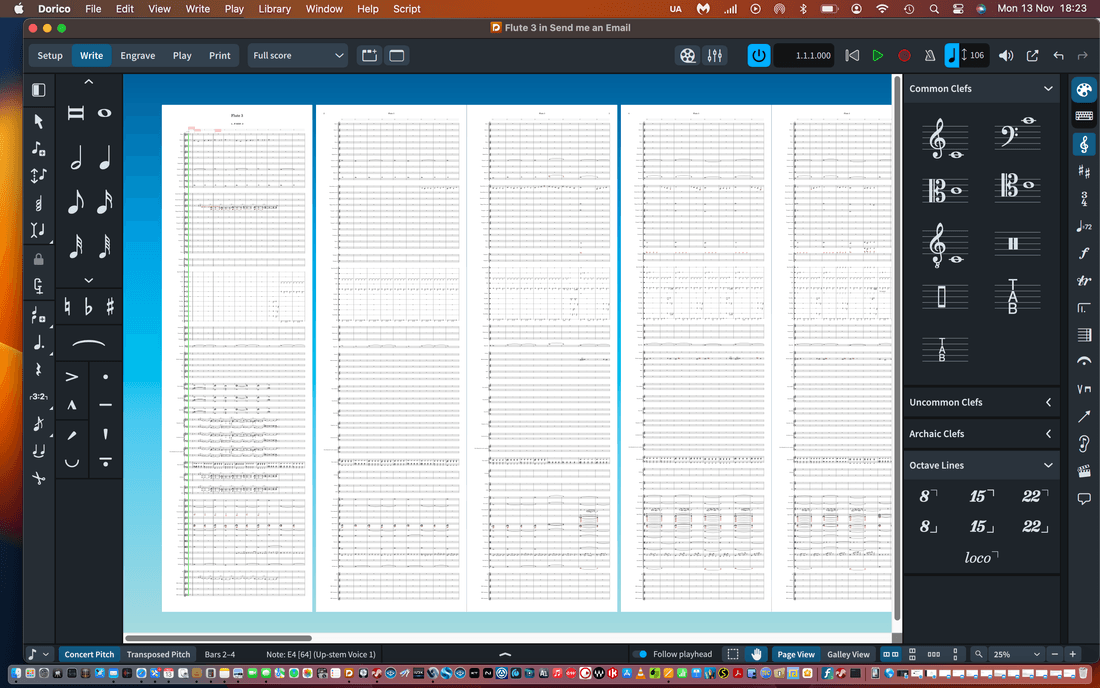Hi Erik
Thank you very much for your answer.
The help in Dorico need to be improved ! I have spend an hour to find the "Layout options"
I have manage to change the page size, and I have set it to 1000 mm to be able to edit the "Conductor" !!!!!!!!!!
I have import as midi and I get all the instrument names
The things to do in Logic is to select all the track and to apply Function / Name region to cell name
In Dorico you need to group the pattern to one player, it's a long work !
I have defined to use VI synchronized, the problem is that there is no Drum instrument ; how do I add them ?
Can I use Mir Pro in Dorico ?
Do you have a turorial of VSL used in Dorico ?
Thank you again for your time
Best
Cyril
@Erisno said:
Hi Cyril,
The XML file only preserves notation data and (also should preserve) track name data. In other words, XML doesn't care what plugin instrument you have loaded on the track.
Reading the Steinberg forum, I see that people are experiencing issues when importing XML files from Logic to Dorico. So I'm afraid that this is an issue either somewhere in Logic not exporting the track names correctly or Dorico not importing the XML file correctly. Maybe exporting MIDI from Logic and importing it to Dorico instead will give you better results.
Also when importing large orchestral scores, you might need to change the size of your layout in Dorico:
https://steinberg.help/dorico/v1/en/dorico/topics/engrave_mode/engrave_mode_page_layouts_paper_size_changing_t.html
Best,
Erik

